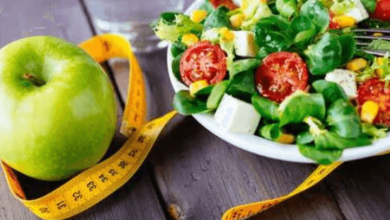
The Potato Diet: How to Get the Most Nutritional Value from Potatoes
In recent times, potato dieting has grown in popularity as a simple way to improve overall health and reduce weight. Even though it may sound unusual, the potato-based diet is based on the nutritional value of this humble tuber. In this article, you’ll learn everything about the diet of potato nutrition benefits.
Understanding the Potato Diet
Potatoes are a simple, mono-food diet. You eat potatoes only for a limited period. It is not difficult to understand: eating only potatoes will allow you to reduce your caloric expenditure while still giving your body essential nutrients.
Potatoes – Nutritional Benefits
Potatoes are underrated nutritionally. Contrary to the popular belief that they are just carbs, they’re a nutritious food full of essential vitamins, nutrients, and beneficial compounds.
- Vitamins and Minerals:
Vitamins and minerals abound in potatoes, including manganese, vitamin B6, potassium, and vitamin C. Vitamin C supports immune function, skin health, and heart function. Vitamin B6 has an important role in energy metabolic processes, while manganese plays a crucial role in bone and wound healing.
- High in Fiber:
A significant amount of dietary cellulose is found in potatoes, especially when the skin is left intact. Fiber helps maintain digestive health by regulating bowel movements. It can also prevent constipation. Also, fiber helps promote feelings like fullness and contentment, which may help with weight loss.
- Low in Calories, Fats and Sugars:
The potato diet has many benefits, including its low calories and low-fat content. Potatoes naturally contain low levels of fat and calories, making them a healthy food option for those who wish to reduce calorie intake or lose weight. By substituting higher-calorie food with potatoes, you create a necessary calorie deficit for weight loss.
What Is the Potato Diet and How Does It Function?
In general, the potato diet involves eating potatoes boiled, baked, steamed, or plain. Some variations of potato diets include vegetables or lean proteins in small quantities, while others strictly stick to potatoes.
- Caloric Limitation:
Caloric restriction plays a major role in the effectiveness of the Potato Diet. When you limit your food options to potatoes, you consume naturally fewer calories than on a standard diet. This caloric shortage leads to weight gain over time.
- Satiety, Fullness, and Feelings of Satiety:
In spite of their low calories, potatoes can be quite filling due to their high fiber content. This prevents hunger and helps reduce overeating.
Potato Diets: Benefits and Potential
- Weight Loss:
One of the greatest benefits of a potato diet is the possibility of weight loss. By increasing feelings of satisfaction and promoting a nutritional deficit, the potato diet can assist individuals in shedding excess pounds and achieving their weight-loss goals.
- Improved Blood Sugar Control:
In contrast to what is commonly believed, potatoes can form part of an effective diet for people who have diabetes or are looking to regulate their blood sugar. If potatoes are eaten whole, without sugar or fat, they have a lower glycaemic level, which means that blood sugar levels will gradually rise. This can stabilize blood glucose and help prevent highs and lows during the day.
- Simplified Eating Patterns:
Simple diets can appeal to those seeking a more straightforward approach to weight loss or nutrition. Potato dieting requires little meal planning or preparation, eliminating fatigue and streamlining eating.
Conclusion
When approached responsibly, potato dieting can be a powerful tool for weight loss and health improvement. By incorporating potatoes into a balanced diet to reap the benefits of their nutrition, you can improve your health and achieve wellness goals. Consult a healthcare provider or registered dietitian prior to starting the potato diet.




